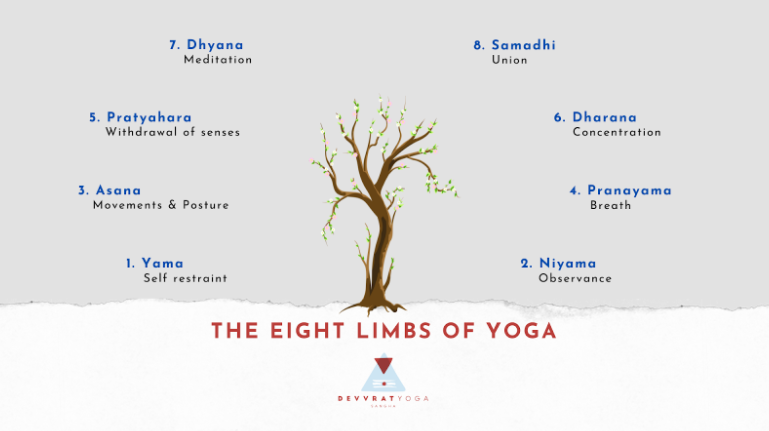Yoga Philosophy
The philosophy of yoga clearly states that mind, body, and spirit are one and inseparable. It is similar to the philosophy of Buddhism, as it states that the cause of all suffering is spiritual ignorance. All that binds us to the cycle of rebirth or the wheel of Samsara is this ignorance. The philosophical teachings of yoga revolve around the attainment of self-realization, mental detachment, and self-awareness through the removal of this ignorance.
Yoga means ‘Union’ of the six systems of Indian philosophies. The basic text that details these philosophies is the Yoga Sutra by the great sage Patanjali.
According to Patanjali, yoga is defined as ‘Chitta vritti nirodha,’ a state of mind free from the states of worry, trouble, anger, or fear. The mind is still. A mind that makes you focus on the present.
The three Gunas or qualities described in yoga philosophy are:
1. Sattva or harmony and kindness.
2. Rajas or passion and activity.
3. Tamas or destruction and chaos.
It states that all three qualities are present in a person, but in varying degrees. It also states that Sattva is Purusha, and Tamas is Prakriti, in accordance with the Sankhya theory.
Yoga philosophy also outlines the eight limbs one should follow to attain Moksha or liberation from the constraints of the materialistic world. They are Yama (social code of conduct ), niyama (Personal code of conduct ), asana (physical practice), pranayama (breathing practice), pratyahara (withdrawal), dharana (concentration), dhyana (meditaton), and Samadhi (unity with God).

A yogi should have knowledge of the relationship between Atman and Brahman, Prakriti and Purusha, and the Holy Trinity of Brahma, Vishnu, and Shiva.
One gets this knowledge from following different paths of yoga philosophy.
There are six paths of yoga generally recognized:
It is the difference between merely going to the gym and working out, and adopting yoga along with its philosophy. Learning yoga, along with its philosophy, supports us in our endeavor to master our lives and gain lordliness. Without yoga philosophy, the practices of asanas and pranayama become a mere fitness fetish and block us from attaining spiritual refinement.
Thus yoga can be said to be a science and an exploration of the self, that brings about a metamorphosis in the practitioner and aids in self-realization. Yoga, in its true essence, elevates the Kundalini or the life force situated at the base of the spine. Through this, a person can seek out the purpose of one’s birth.
A quote from the Bhagavad Gita;
“A person is said to have achieved Yoga, a union with the Self when the perfectly disciplined mind gets freedom from all desires and becomes absorbed in the Self alone.”
Interested in becoming a yoga teacher?
Upcoming events and latest blogs